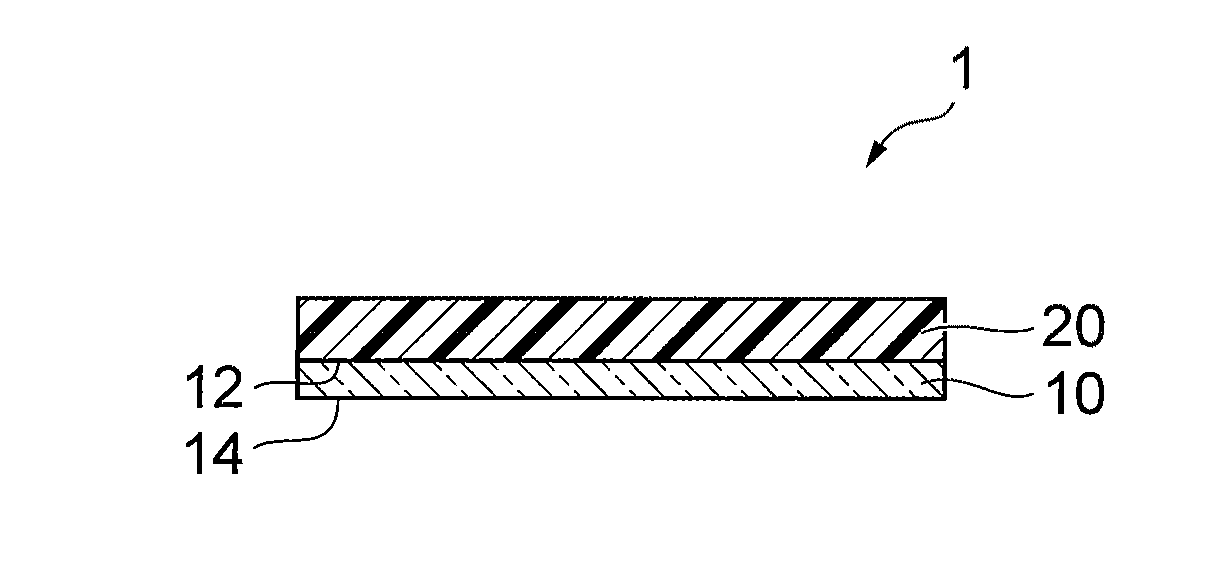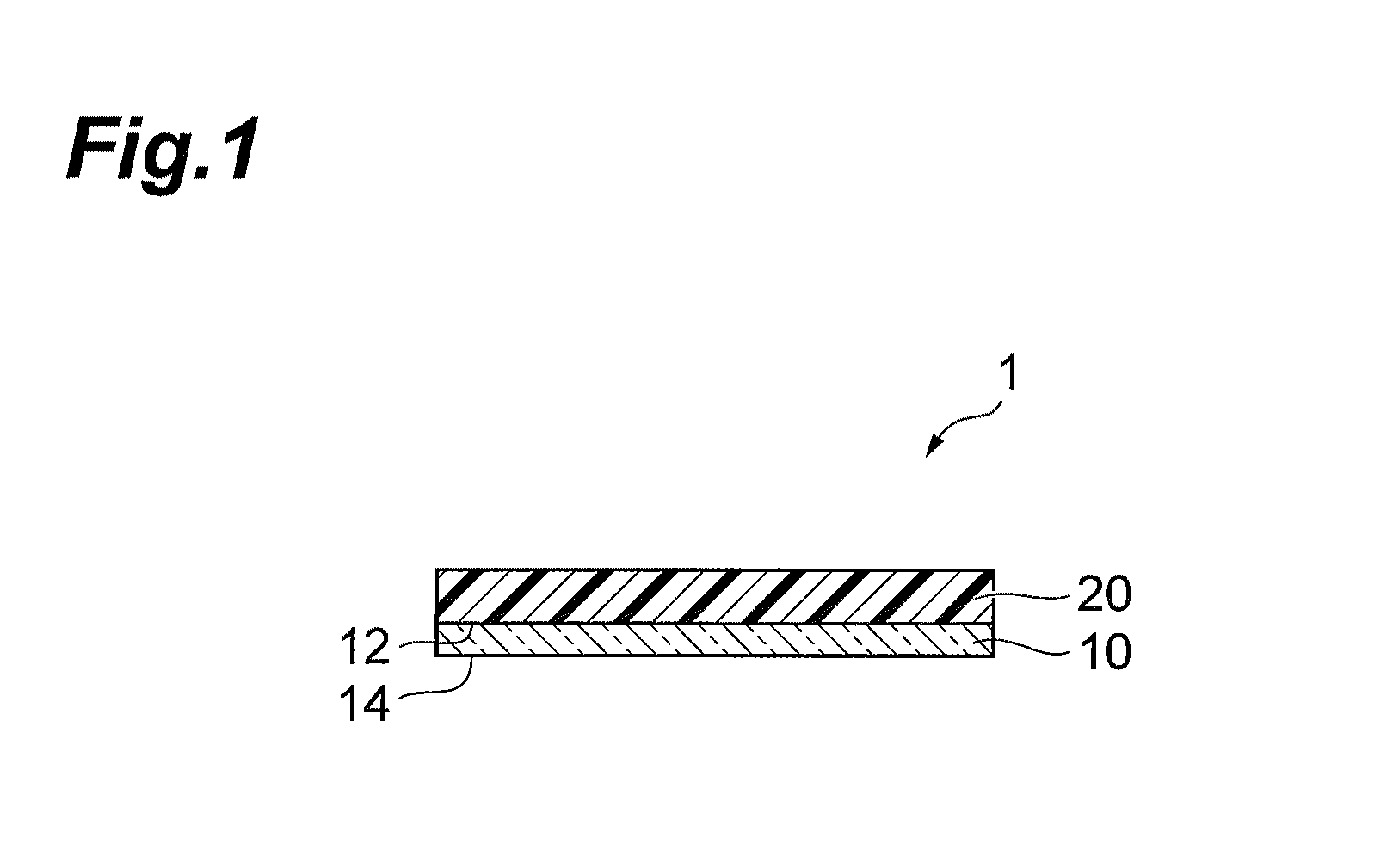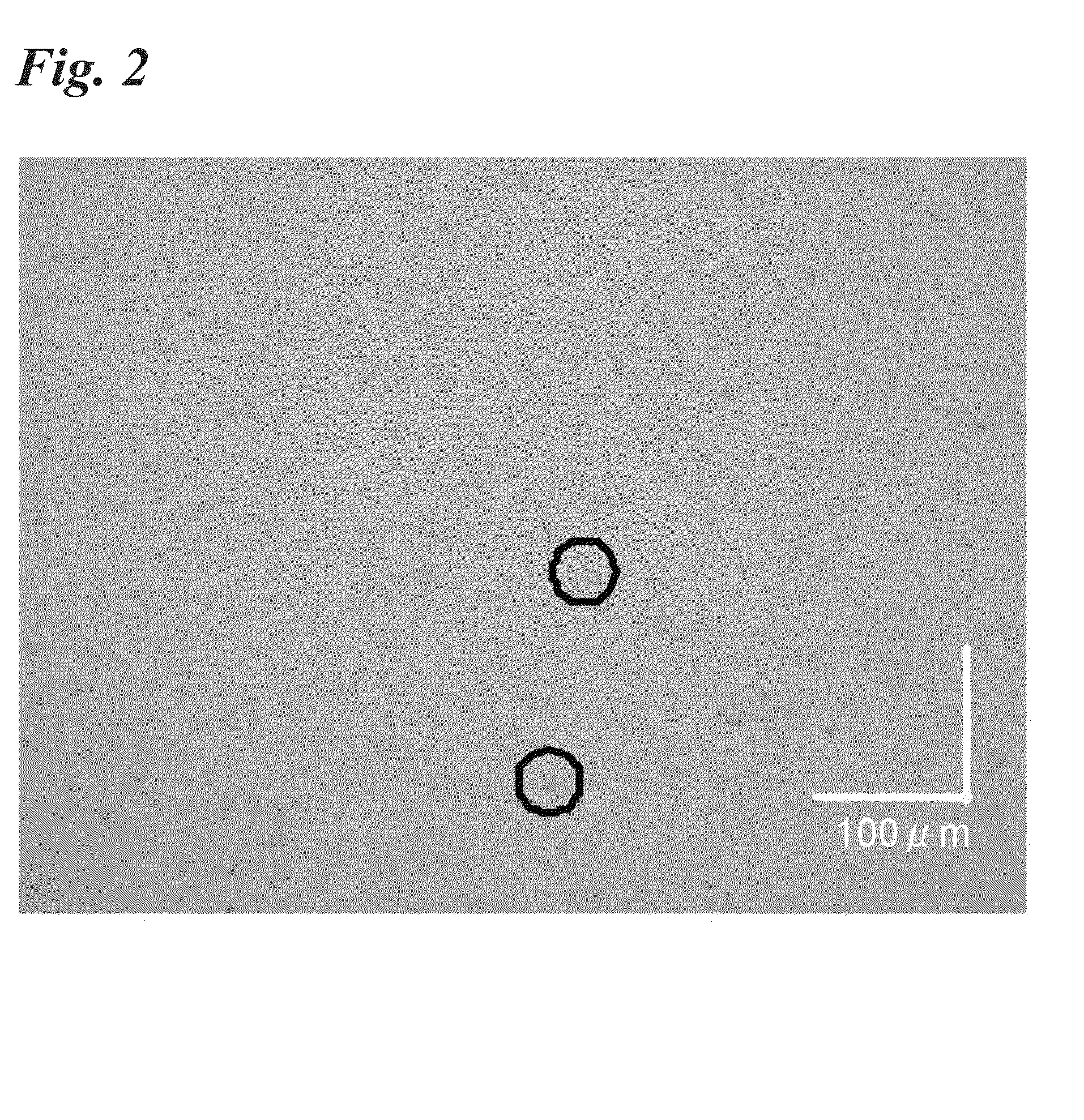Photosensitive element, method for forming resist pattern, and method for producing printed circuit board
- Summary
- Abstract
- Description
- Claims
- Application Information
AI Technical Summary
Benefits of technology
Problems solved by technology
Method used
Image
Examples
synthesis example 1
[0162]In a flask equipped with a stirrer, reflux condenser, thermometer, dropping funnel and nitrogen gas inlet tube there was added 420 g of a mixture of toluene and methylcellosolve in a weight ratio of 6:4, and the mixture was stirred while blowing in nitrogen gas and heated to 80° C. Separately, as copolymerizing monomer there was prepared a mixed solution of 162 g of methacrylic acid, 30 g of methyl methacrylate, 270 g of styrene, 270 g of benzyl methacrylate and 4.4 g of azobisisobutyronitrile (hereinafter referred to as “solution a”), and, over a period of 4 hours, solution “a” was added dropwise to the mixture of toluene and methylcellosolve in a weight ratio of 6:4, that had been heated to 80° C. Next, 40 g of the mixture of toluene and methylcellosolve in a weight ratio of 6:4 was used for rinsing of the dropping funnel and added into the flask, and heating was then performed for 2 hours while stirring at 80° C. Also, a solution of 1.0 g of azobisisobutyronitrile dissolved...
synthesis example 2
[0163]A binder polymer solution as component (a) was obtained by the same procedure as Synthesis Example 1, except that as the copolymerizing monomer there was prepared a mixed solution of 150 g of methacrylic acid, 300 g of methyl methacrylate, 150 g of styrene and 4.4 g of azobisisobutyronitrile (hereunder referred to as “solution b”). Toluene was added to the binder polymer solution to adjust the non-volatilizing component concentration (solid concentration) to 40 wt %. The weight-average molecular weight of the binder polymer was 45000. The acid value of the binder polymer was 121 mgKOH / g.
[0164](GPC Conditions)
Pump: Hitachi L-6000 (trade name of Hitachi, Ltd.).
Column: Gelpack GL-R420+Gelpack GL-R430+Gelpack
[0165]GL-R440M (total: 3) (all trade names of Hitachi Chemical Co., Ltd.)
Eluent: tetrahydrofuran
Measuring temperature: 40° C.
Flow rate: 2.05 mL / min
Detector: Hitachi L-3300 RI (trade name of Hitachi, Ltd.).
[0166](Measurement of Acid Value)
[0167]Synthesized binder polymer was we...
PUM
 Login to View More
Login to View More Abstract
Description
Claims
Application Information
 Login to View More
Login to View More - R&D
- Intellectual Property
- Life Sciences
- Materials
- Tech Scout
- Unparalleled Data Quality
- Higher Quality Content
- 60% Fewer Hallucinations
Browse by: Latest US Patents, China's latest patents, Technical Efficacy Thesaurus, Application Domain, Technology Topic, Popular Technical Reports.
© 2025 PatSnap. All rights reserved.Legal|Privacy policy|Modern Slavery Act Transparency Statement|Sitemap|About US| Contact US: help@patsnap.com



